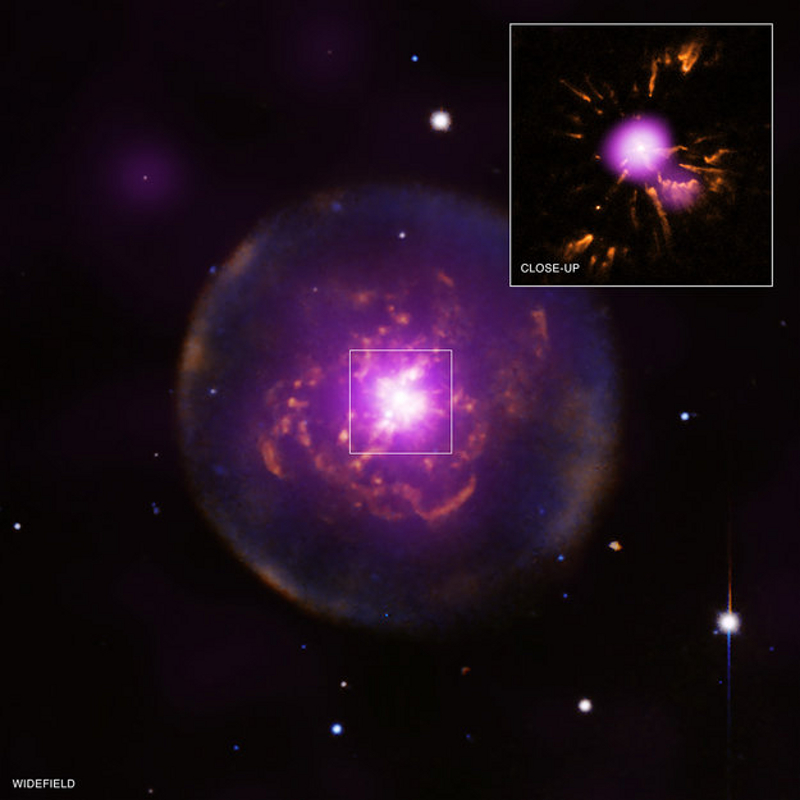
 Credit: ESA/XMM-Newton and NSF/NOAO/KPNO; inset: NASA/CXC/IAA-CSIC/M. Guerrero et al. and NASA/STScI and ESA
Credit: ESA/XMM-Newton and NSF/NOAO/KPNO; inset: NASA/CXC/IAA-CSIC/M. Guerrero et al. and NASA/STScI and ESA
Born Again
Stars are the chemical factories where complex atoms are built up from simpler ones. This process takes place in the stellar core by combining atomic nuclei, though some new nuclei are built up by the rather leisurly accumulation of free neutrons. Fortunately for us stars not only have ways of cooking up this complex material, but also of distributing it into the rest of space, so it can be used to build rocky planets and people. High mass stars do this by strong stellar winds and supernovae. Lower mass stars do this largely through the ejection of (so-called) planetary nebula (an astronomical misnomer, since these nebulae have no direct connection to planetary systems). In such stars, as nuclear burning nears its end, the unstable release of energy in the interior helps drive off the outer part of the star into space. The nebula thus formed, illuminated by ultraviolet radiation from the exposed stellar interior, glows brightly. A good example is the planetary nebula Abell 30, shown above in a composite image consisting of optical emission as seen by the Hubble Space Telescope, and X-ray emission (in purple) observed by the XMM-Newton Observatory and the Chandra X-ray Observatory. The outermost shell of material was probably ejected some 12,500 years ago; but Abell 30 seems to have undergone a fairly recent ejection of material which created dense knots of helium and carbon, seen in the inset image. Interaction between these knots and the stellar wind from the central star generates X-rays which help evaporate the knots, releasing helium and carbon rich gas into space.
Published: February 11, 2013
<
HEA Dictionary ● Archive
● Search HEAPOW
● Other Languages
● HEAPOW on Facebook
● Download all Images
● Education ● HEAD
>

Each week the HEASARC
brings you new, exciting and beautiful images from X-ray and Gamma ray
astronomy. Check back each week and be sure to check out the HEAPOW archive!
Page Author: Dr. Michael F. Corcoran
Last modified Monday, 26-Feb-2024 17:44:32 EST


